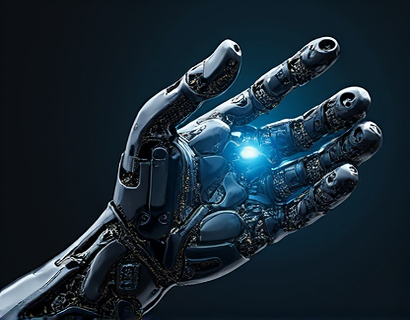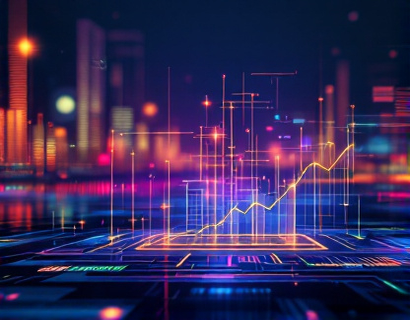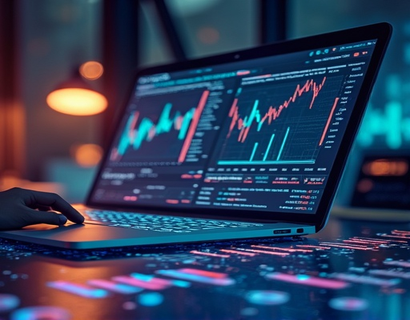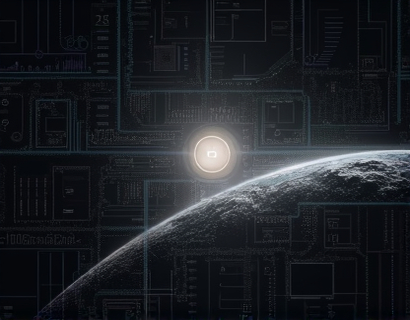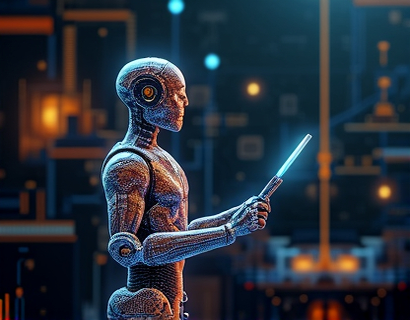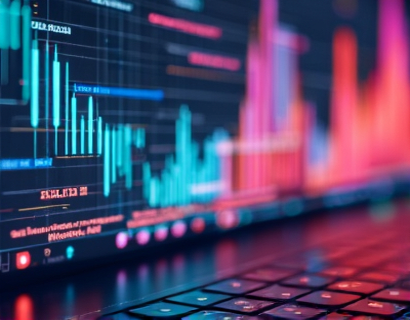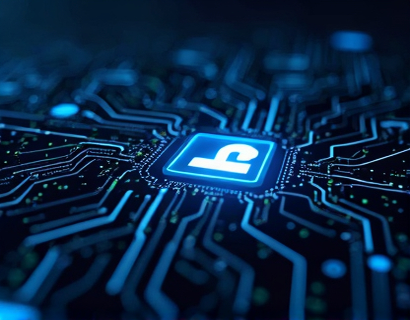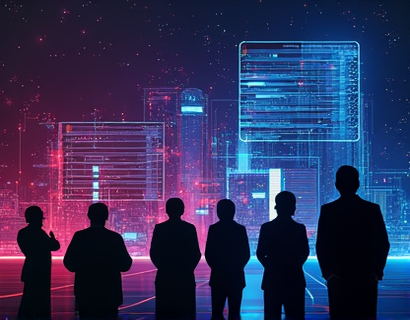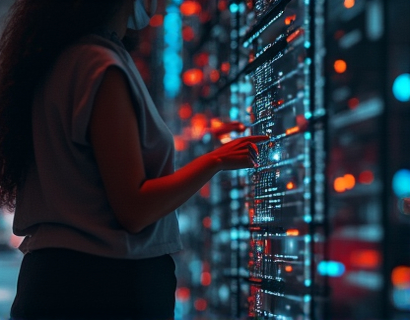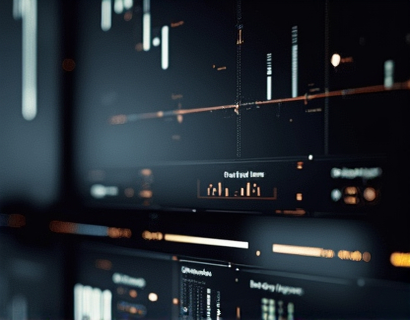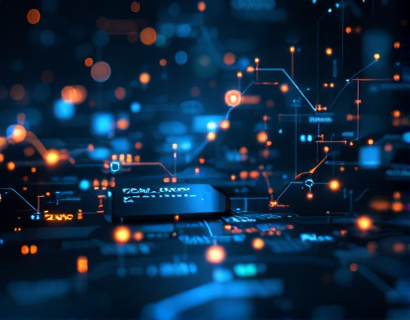Elevating Digital Transformation: The Synergy of Crypto and AI
The intersection of cryptocurrency and artificial intelligence represents a pivotal frontier in the digital transformation landscape. This convergence is not merely a technological curiosity but a powerful force reshaping how we interact with digital services and applications. For tech innovators and early adopters, understanding this synergy is crucial to staying ahead in an increasingly competitive and dynamic market. This article delves into the ways blockchain and AI are revolutionizing app and service interactions, enhancing connectivity, and elevating online presence. By exploring these advanced technologies, we aim to provide a comprehensive guide for those eager to harness the potential of innovative ecosystem solutions.
Blockchain: The Foundation of Trust and Transparency
At its core, blockchain technology offers a decentralized and immutable ledger that ensures transparency and security in transactions. This fundamental characteristic makes blockchain an ideal foundation for building trust in digital ecosystems. In the context of digital transformation, blockchain can significantly reduce fraud, enhance data integrity, and streamline processes. For instance, in supply chain management, blockchain can provide a transparent and tamper-proof record of transactions, ensuring that every step from production to delivery is verifiable and secure.
The application of blockchain extends beyond just transaction records. Smart contracts, self-executing contracts with the terms directly written into code, automate and enforce agreements without the need for intermediaries. This not only reduces costs but also increases efficiency and reliability. In the realm of digital identity, blockchain can provide individuals with control over their personal data, allowing them to securely share and manage their identities across various platforms and services.
AI: The Catalyst for Intelligent Automation
Artificial intelligence, on the other hand, brings the power of intelligent automation to the digital landscape. AI algorithms can analyze vast amounts of data to uncover patterns, make predictions, and drive decision-making processes. In the context of digital transformation, AI can enhance user experiences by personalizing content, optimizing recommendations, and providing real-time support. For businesses, AI can automate routine tasks, freeing up resources to focus on more strategic initiatives.
One of the most significant advantages of AI is its ability to adapt and learn from new data. This continuous learning capability ensures that AI systems become more accurate and efficient over time. In customer service, AI-powered chatbots can handle a wide range of inquiries, providing instant and accurate responses. This not only improves customer satisfaction but also reduces the workload on human support teams.
Synergistic Potential: Blockchain and AI Combined
The true power of blockchain and AI is realized when they are combined. The transparency and security of blockchain complement the intelligence and adaptability of AI, creating a synergistic effect that can drive unprecedented growth and engagement. For example, in financial services, blockchain can ensure the secure and transparent transfer of assets, while AI can analyze market trends and optimize investment strategies. This combination can lead to more secure, efficient, and intelligent financial systems.
In the realm of healthcare, blockchain can secure patient data and ensure its integrity, while AI can analyze medical records to provide personalized treatment recommendations. The integration of these technologies can lead to more accurate diagnoses, better patient outcomes, and more efficient healthcare delivery. Similarly, in the Internet of Things (IoT), blockchain can secure device communications and data transactions, while AI can process and analyze the vast amounts of data generated by IoT devices, enabling smarter and more responsive systems.
Enhancing Connectivity and User Engagement
The fusion of blockchain and AI can significantly enhance connectivity and user engagement across digital platforms. By leveraging blockchain, digital ecosystems can create secure and decentralized networks that foster trust and collaboration among users. AI, with its ability to analyze user behavior and preferences, can tailor experiences to individual needs, increasing engagement and satisfaction.
For instance, in social media platforms, AI can curate content based on user interests and interactions, while blockchain can ensure that user data is protected and that content creators are fairly compensated. This combination can lead to more meaningful and engaging user experiences, encouraging higher levels of participation and loyalty.
In gaming, blockchain can provide a transparent and secure environment for in-game transactions and asset ownership, while AI can create dynamic and adaptive gameplay experiences. Players can own unique digital assets that are verifiable and tradable, enhancing the overall gaming experience and creating new revenue streams for developers.
Elevating Online Presence and Brand Trust
For businesses and brands, the integration of blockchain and AI can significantly elevate their online presence and build trust with their audience. Blockchain can be used to create transparent and verifiable records of brand interactions, product origins, and supply chain processes. This transparency can enhance brand credibility and consumer trust.
AI can further amplify this effect by analyzing customer feedback and sentiment, providing insights that can inform marketing strategies and improve customer service. AI-powered chatbots and virtual assistants can offer personalized support and recommendations, creating a more engaging and satisfying customer experience. By combining these technologies, brands can establish themselves as leaders in innovation and trust, setting them apart in a crowded market.
Challenges and Considerations
While the potential benefits of integrating blockchain and AI are substantial, there are also challenges and considerations that must be addressed. One of the primary challenges is the technical complexity involved in implementing these technologies. Both blockchain and AI require specialized knowledge and expertise, which can be a barrier for some organizations.
Another consideration is the regulatory landscape. As these technologies evolve, regulatory frameworks are still catching up, and compliance can be a complex issue. It is essential for organizations to stay informed about regulatory developments and ensure that their implementations are compliant.
Scalability is another critical factor. While blockchain and AI can handle significant amounts of data and transactions, ensuring that systems remain efficient and scalable as they grow is essential. Organizations must invest in robust infrastructure and continuous optimization to support their digital transformation efforts.
Case Studies and Real-World Applications
Several organizations have already begun to leverage the synergy of blockchain and AI to drive innovation and growth. One notable example is in the finance sector, where a major bank implemented a blockchain-based system for trade finance processes, combined with AI for risk assessment and fraud detection. This integration has led to faster transaction times, reduced costs, and improved accuracy in risk management.
In the supply chain industry, a leading retailer has adopted a blockchain-based platform to track product provenance and ensure authenticity. AI algorithms analyze the data to optimize inventory management and predict consumer demand, resulting in more efficient operations and higher customer satisfaction.
In the creative industry, an artist collective uses blockchain to tokenize and sell digital art, ensuring that artists receive fair compensation for their work. AI tools help in creating and customizing digital art pieces, enhancing the creative process and expanding the reach of the collective.
Future Outlook: The Next Frontier
The future of digital transformation is undoubtedly intertwined with the continued development and integration of blockchain and AI. As these technologies mature, we can expect even more innovative applications and use cases. The potential for decentralized autonomous organizations (DAOs), powered by blockchain and AI, could redefine how businesses operate and make decisions.
Moreover, the convergence of blockchain, AI, and other emerging technologies like quantum computing and edge computing will create new opportunities for innovation. The ability to process and analyze data in real-time, combined with the security and transparency of blockchain, will pave the way for smarter, more resilient, and more connected digital ecosystems.
For tech innovators and early adopters, embracing this synergy is not just an option but a necessity. By staying at the forefront of these technological advancements, they can unlock new dimensions of growth, engagement, and success in the digital landscape.




